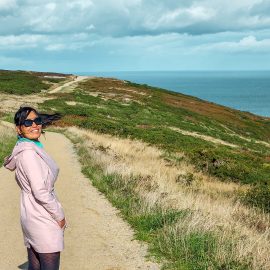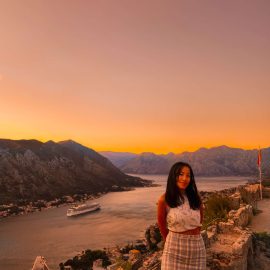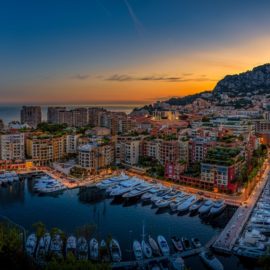As part of my quest to visit all 195 UN recognised countries, I’ve had the pleasure of exploring over 100 destinations. My latest stop? Malta. This small Mediterranean island country is packed with history, stunning landscapes, and an inviting atmosphere, making it a perfect destination for travellers. If you’re wondering how to make the most of 3 days in Malta without a car, I’ve got you covered. From the ancient streets of Valletta to the idyllic islands of Gozo and Comino, here’s how to experience Malta at its finest.
Malta is a destination that combines centuries of history with stunning coastal beauty. Though compact in size, With its crystal-clear waters, rugged landscapes, movie sets and vibrant culture, makes it a perfect destination for travellers looking to explore without the need for a car.
At the heart of this island nation is Valletta, the capital city and a UNESCO World Heritage site. Valletta is a living museum, where every street and building tells a story of the island’s rich history, shaped by the Knights of St. John, British colonization, and centuries of Mediterranean influence. With its grand architecture, bustling markets, and scenic waterfronts, Valletta is the ideal place to start your journey in Malta.
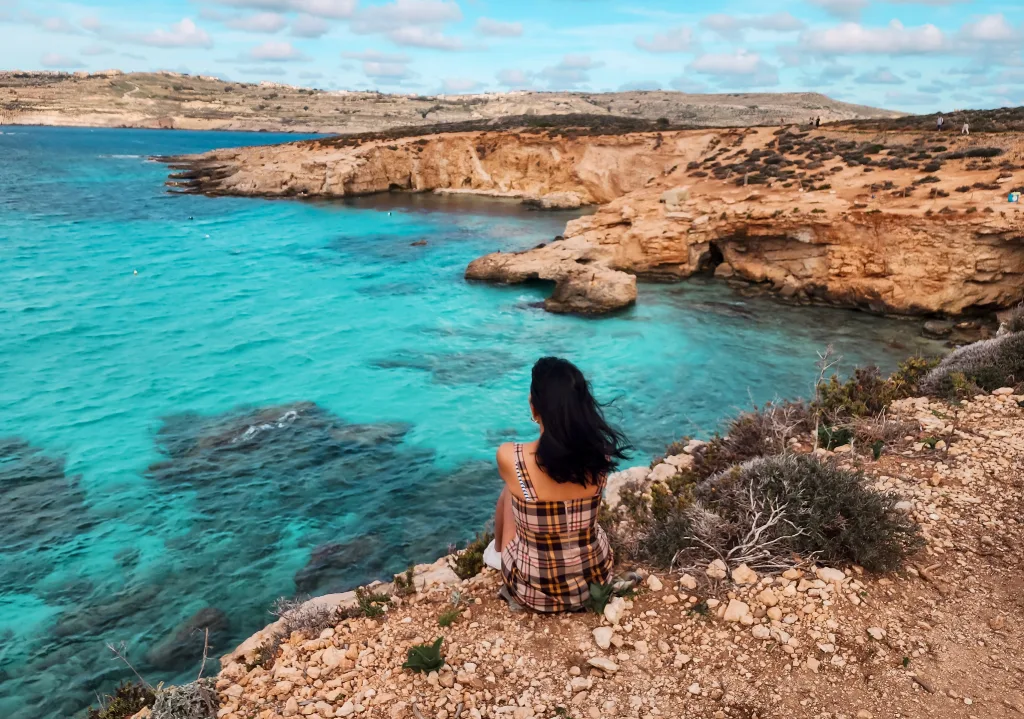



Ultimate 3 days in Malta without a car
Know before you go to Malta
Best time to visit: The optimal time to visit Malta is during the spring (March to May) and autumn (September to November) months. These seasons offer mild temperatures and fewer crowds, allowing for a more relaxed experience while exploring the islands.
Getting around:
- Public transportation: Malta’s public bus system is extensive and affordable, connecting major towns and attractions. Buses are a convenient option for travelers without a car.
- Ferries: Ferries operate between Malta, Gozo, and Comino, providing scenic and efficient travel between the islands.
- Taxis and ride-sharing: Taxis are readily available, and ride-sharing services like Bolt operate in major cities, offering flexible transportation options.
Language: Malta has two official languages: Maltese and English. English is widely spoken, making communication straightforward for English-speaking travelers.
Currency: The official currency is the Euro (€). Credit cards are widely accepted in urban areas, but it’s advisable to carry some cash for smaller establishments or rural areas.
Insider Tips:
- Tap water: Tap water in Malta is safe to drink, though it may have a different taste due to mineral content. If you prefer, bottled water is readily available.
- Must try: Pastizzi (flaky, pastry-filled delights), Fenek (rabbit stew) and Bragioli (Maltese Beef Olives)
- Electrical outlets: Malta uses the British-style G-type electrical plug (three rectangular pins). Ensure you have the appropriate adapter for your devices.
- Cultural etiquette: While Malta is generally relaxed, it’s respectful to dress modestly when visiting religious sites. Additionally, tipping is customary in restaurants and cafes, typically around 10% if service is not included.
- Advance bookings: For popular attractions like the Ħal Saflieni Hypogeum, it’s recommended to book tickets well in advance due to limited daily visitor numbers.
- Public holidays: Be aware of local public holidays, as some attractions and services may have altered hours or be closed. Planning ahead can help you make the most of your visit.
- Don’t forget to download Bolt on your phone
Where to stay in Malta for 3 days?
Key areas to consider
During your 3 days in Malta without a car, St. Julian’s and Valletta are two prime areas to stay, each offering unique advantages for different travel styles. Here’s a breakdown of accommodation options in each area:
For accommodation, I recommend using booking.com and sorting with price, then consider the ones with highest reviews plus within 1km of centre. Below I researched and named the best ones with this filter (at the time of writing)
For tours, I recommend using get your guide and walking tours available in most places.
St. Julian’s: Perfect for entertainment, dining, and coastal views
Since Valletta was fully booked and quite expensive, St. Julian’s proved to be a more practical and affordable choice for my stay. It’s perfectly located for easy access to both St. Paul’s Bay and Comino. Here are three great accommodation options in St. Julian’s:
- Luxury option: The Westin Dragonara Resort
- A luxurious resort offering stunning views of the Mediterranean and top-notch amenities like a private beach, outdoor pools, and multiple dining options.
- Why stay here: Ideal for those looking for an upscale experience with direct access to the beach, making it a perfect option for a relaxing and high-end stay.
- Mid- range option: Hotel Juliani
- This stylish boutique hotel offers a blend of comfort and modern design, located near the bay. It also has a rooftop pool and easy access to St. Julian’s nightlife.
- Why stay here: Great for travelers who want to be close to both entertainment and relaxation, with a more affordable price tag compared to luxury resorts.
- Budget option: Follow The Sun Boutique Hostel
- A lively and social atmosphere perfect for solo travelers and backpackers. The hostel is located close to the beach and major attractions, offering both dormitory and private rooms.
- Why stay here: Perfect for budget-conscious travelers who want to enjoy the social scene in St. Julian’sand meet fellow travelers while being near the coast.




Valletta: Malta’s historic heart with cultural charm
Although Valletta can be pricier and more crowded, staying in the capital places you in the heart of Malta’s rich history, giving you easy access to the island’s historic landmarks and transport to neighboring islands like Gozo. Here are three accommodation options in Valletta:
- Luxury option: The Phoenicia Malta
- A luxurious 5-star hotel located just outside the city’s walls, offering exceptional service, elegant rooms, and panoramic views of the Grand Harbour.
- Why Stay Here: Ideal for those seeking a blend of luxury, history, and culture, with easy access to the heart of Valletta and its historic sites.
- Mid- range option: The La Falconeria Hotel
- A beautifully restored boutique hotel offering contemporary rooms with a historic touch. It’s centrally located in Valletta, within walking distance of key attractions.
- Why Stay Here: For those who want to be close to Valletta’s cultural treasures while enjoying modern comfort at a reasonable price.
- Budget option: Hostel Malti
- Located just outside Valletta’s main area, Hostel Malti offers budget-friendly accommodation with a friendly atmosphere. It’s a great base for exploring Valletta’s historic sites and surrounding areas.
- Why Stay Here: Perfect for travelers on a budget who still want to experience the charm of Valletta while staying in a relaxed and social environment.
Exploring Malta: A perfect 3 days in Malta without a car
What to see in Malta in 3 days?








Day 1: Exploring the best of Valletta
Start your 3 days in Malta without a car with a deep dive into Valletta, the island’s UNESCO-listed capital. There are direct buses from St Julians to Valletta downtown and runs till late. Valletta is a compact city brimming with history and charm, and can be easily explored on foot.
Begin your day at St. John’s Co-Cathedral, a baroque masterpiece with opulent interiors, including works by Caravaggio. Afterward, stroll through the cobbled streets, exploring the architectural beauty that lines the city. Cost is €10 – Baroque masterpiece, including Caravaggio’s famous painting.
For a taste of the island’s past, head to the Grand Master’s Palace and the National Museum of Archaeology. Cost is €10 (Palace), €5 (Museum) to explore Malta’s history and knights’ armor.
After a busy morning, relax in the Upper Barracca Gardens. No cost. The panoramic views of the Grand Harbour are some of the best in the city, offering the perfect backdrop for a tranquil lunch break.
Snacks in Valletta is a must-try experience; indulge in a local Maltese pastizzi, a savory pastry filled with ricotta or peas (€1.50-€3.00 each). This light snack will fuel your afternoon exploration as you continue to uncover the rich history of this charming city. With no need for a car, Valletta’s compact layout makes it the ideal spot to spend a leisurely day on foot. Continue exploring Valletta’s streets, Auberge de Castille, and Valletta Waterfront.
There are many restaurants and cafes for lunch and dinner. If you are in Valletta hotel recommended Rampila Restaurant for Fenek rabbit stew. Cost: €20-€30
Then relax at a bar in Strait Street (Valletta) or by the Portomaso Marina (St. Julian’s).
Day 2: A day trip to Gozo & Comino
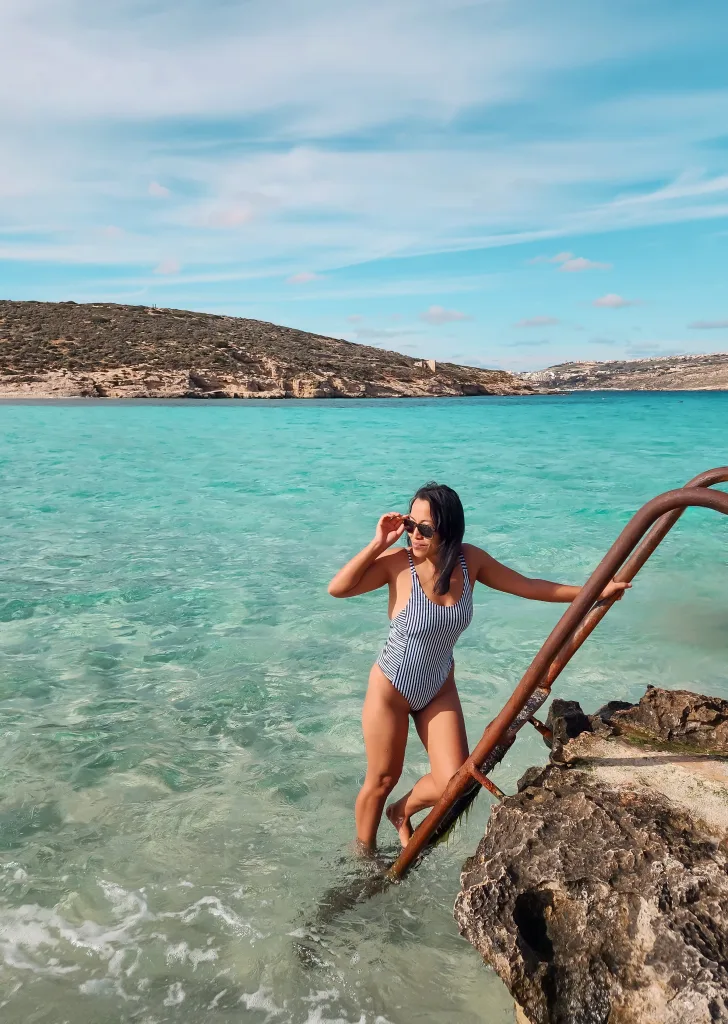







On your second day, set off for an unforgettable day trip to Gozo and Comino. While Malta itself has much to offer, these neighboring islands are a must-see. From Cirkewwa, take a boat to Comino first, where the breathtaking Blue Lagoon awaits. The clear, turquoise waters are perfect for a swim, sunbathing, or simply enjoying the serenity of this natural paradise. Don’t miss the blue grotto along the way!
Next, head to Gozo, Malta’s sister island, for a few hours of exploration. Don’t worry about transport—local boats and minibuses make it easy to get around. You can opt for a mini-bus shuttle to visit Victoria, the capital of Gozo, or explore the stunning Xlendi Bay.
Grab lunch from any of the water restaurants in Xlendi Bay or near Victoria. Whether you wander through the narrow streets of Victoria or relax by the water, you’ll quickly discover why Gozo is often described as more tranquil and picturesque than its larger counterpart.
If you have more time, consider visiting:
- Azure Window (Dwejra Bay): Once an iconic natural arch, though it collapsed, the area is still stunning.
- Ta’ Pinu Sanctuary: A beautiful church with breathtaking views of the island.
Alternatively, book the day trip to Gozo, Comino & blue lagoon tour. They will cover all the transport for you easy peasy.
Dinner back at St. Julian’s – The Caviar & Bull Cost: €30-€50 for Seafood & mediterranean fine dining by the marina.
For accommodation, I recommend using booking.com and sorting with price, then consider the ones with highest reviews plus within 1km of centre. Above I researched and named the best ones with this filter (at the time of writing)
For tours, I recommend using get your guide and walking tours available in most places.
Day 3: The three cities and Birgu




For your final Malta itinerary, take a step back in time as you explore The Three Cities, located just across the Grand Harbour from Valletta the main island. Get to the ferry terminal, buy the return ticket to Birgu (around €2-€3 for a return ticket and 15 minutes each way) the oldest of the three cities, is an essential stop on any trip to Malta. Its narrow streets, historic fortifications, and maritime history but didn’t see many people that day so felt like it was a silent city but an unforgettable experience. Pastizzi here was 50 cents! Delicious.
Don’t miss Fort St. Angelo (cost €10), where you can learn about Malta’s military past and enjoy panoramic views of the harbor.
Afterward, take time to wander around the wide streets of Cospicua, the largest of the Three Cities, known for its mix of old and modern elements, and its Mithraic Temple. Free to walk around.
Then head to Senglea, a peaceful and scenic spot to explore, offering stunning views over the harbor and neighboring islands. 45 minutes-1 hour, no cost.
These areas are easily accessible by public transport or on foot, making them perfect for travelers who are exploring Malta without a car.
Many dinner options in Birgu, Senglea and Cospicua or head back to Valleta to wrap up the trip. Below are some options but make sure to check the details with the restaurant as may change.
- Option 1: Dinner in Birgu (Vittoriosa) – D’Argento
- What to Try: Traditional Mediterranean dishes like grilled fish or rabbit stew.
- Cost: €20-€30 for a main.
- Atmosphere: Casual, with a lovely terrace overlooking the harbor.
- Opening Hours: 12:00 PM – 10:00 PM.
- Option 2: Dinner in Senglea – The Chophouse
- What to Try: High-quality meats and seafood, including steaks and grilled fish.
- Cost: €30-€50 for a main.
- Atmosphere: Upscale, with beautiful views of Valletta and the harbor.
- Opening Hours: 12:00 PM – 11:00 PM.
- Option 3: Dinner in Cospicua – La Vela
- What to Try: Fresh seafood or a Maltese platter with local cheeses, olives, and cured meats.
- Cost: €25-€35 for a main.
- Atmosphere: Cozy, with a laid-back vibe perfect for a relaxed dinner.
- Opening Hours: 1:00 PM – 10:00 PM.
FAQs for 3 days in Malta without a car




1. Is it easy to get around Malta without a car?
Yes, getting around Malta without a car is quite easy and convenient. Although renting a car is an option for more flexibility, Malta has several alternative transport methods that make it accessible to explore the island efficiently. Here are the main ways you can get around:
1. Public buses
- Malta has a reliable and affordable bus system that covers almost all parts of the island, including popular tourist spots, towns, and beaches. The buses are frequent, especially during peak tourist seasons, and you can buy a 7-day pass or pay per ride. Buses are a great way to get to major attractions like Valletta, Mdina, Sliema, and the Three Cities. However, be aware that the buses can sometimes be a bit crowded, and routes may take longer due to traffic or multiple stops.
- Tip: Check the bus timetable in advance for precise routes and schedules.
2. Ferries
- Ferries are another fantastic way to travel around Malta, especially if you plan to visit nearby islands like Gozo and Comino. The Valletta-Sliema ferry is a quick and scenic way to cross between the two cities, saving you time compared to taking the bus. Ferries are also used to reach the famous Blue Lagoon on Comino or to get to Gozo, which makes them a popular option for tourists.
- Tip: Consider buying a combined ferry and bus pass for ease of travel around the islands.
3. Walking
- Malta is small and compact, so walking is an excellent way to explore many areas, especially cities like Valletta, Sliema, and Mdina. The streets in these places are often pedestrian-friendly, and walking allows you to fully immerse yourself in the history, architecture, and atmosphere. Many of the top attractions are within walking distance of each other in the main cities.
- Tip: Wear comfortable shoes as some areas, like Mdina or Valletta, have cobblestone streets that can be uneven.
4. Taxis and ride sharing
- Taxis are available throughout Malta, though they can be more expensive compared to buses. Alternatively, you can use ride-sharing apps like Bolt and Lyft (in larger cities like Valletta and Sliema), which are cheaper and more convenient for short trips or when public transport isn’t available.
- Tip: Always agree on a fare before getting into a taxi to avoid misunderstandings.
5. Bike rentals and scooters
- If you’re comfortable with cycling or scootering, renting a bike or electric scooter can be a fun and eco-friendly way to get around, especially in more urban areas like Sliema and St. Julian’s. Malta also has bike rental shops that offer both traditional bicycles and electric bikes for longer trips.
- Tip: Be cautious while cycling in busy areas as traffic can be dense, and roads are sometimes narrow.
6. Hop on hop off buses
- For tourists, the hop-on-hop-off bus tours are an excellent way to explore the island without a car. These buses cover popular sights and attractions, allowing you to hop off at your desired destination, explore, and then hop back on the next bus to continue your journey. It’s a great option for first-time visitors who want to see the main sights in a short period.
2. Is it worth going to Malta for 3 days?
Yes, 3 days is enough to experience the main highlights of Malta. While the island has much to offer, its compact size allows you to explore key attractions comfortably within this time frame. With a well-planned itinerary, you can visit the historic sites in Valletta, enjoy a day trip to Gozo and Comino, and explore the beautiful Three Cities. Public transport, ferries, and walking make it easy to navigate without a car, ensuring you get the most out of your short visit. Three days will give you a solid introduction to the island’s rich history, stunning landscapes, and vibrant culture.
3. How much money do you need for 3 days in Malta?
The amount of money you’ll need for 3 days in Malta varies depending on your travel style. Here’s a breakdown to help you plan:
Budget traveler
- Accommodation: €20-€50 per night (hostels, budget hotels, or guesthouses)
- Meals: €10-€15 per meal (local eateries or street food)
- Transport: €2-€5 per day for public buses (Malta’s public transport system is affordable)
- Activities: €10-€20 for museums or free activities like sightseeing or beaches
- Total Estimated Cost: €100-€180 for 3 days
Mid – range traveler
- Accommodation: €60-€100 per night (3-star hotels, boutique guesthouses)
- Meals: €20-€30 per meal (restaurants offering Mediterranean or local dishes)
- Transport: €10-€15 per day (for taxis, occasional Uber, or renting a scooter)
- Activities: €30-€50 for guided tours or boat trips
- Total Estimated Cost: €240-€400 for 3 days
Luxury traveler
- Accommodation: €150-€300 per night (luxury resorts or 5-star hotels)
- Meals: €40-€70 per meal (fine dining and gourmet experiences)
- Transport: €30-€50 per day for taxis, private transfers, or car rental
- Activities: €60-€100+ per day for premium experiences, such as private boat tours or spa treatments
- Total Estimated Cost: €600-€1,000+ for 3 days
Summary
- Budget Traveler: €100-€180
- Mid-Range Traveler: €240-€400
- Luxury Traveler: €600-€1,000+
4. How do you go from airport to Valletta?
To get to Valletta from Malta’s main points of entry, here are the most common options:
From Malta International Airport (Luqa Airport):
- Taxi: A direct taxi from the airport to Valletta will cost around €20-€25 and take approximately 20 minutes. Taxis are readily available at the airport.
- Public Bus: The cheapest option is to take Bus X4, which runs directly from the airport to Valletta. It costs around €2-€3 and takes about 30-40 minutes, depending on traffic. You can find the bus stop just outside the airport terminal.
- Private Transfer or Shuttle: If you want convenience, you can pre-book a private transfer or shuttle service that will take you directly to your accommodation in Valletta. This is a more expensive option but offers door-to-door service.
From the terry terminal (Sliema or Cirkewwa):
- Ferry from Sliema to Valletta: If you’re coming from Sliema, you can catch a ferry that operates between the two locations. It’s a quick 10-minute ride, and it costs about €1.50.
- From Cirkewwa (Gozo Ferry): If you’re coming from Gozo, you’ll first take the ferry to Cirkewwa and then transfer to a bus or taxi to Valletta. The ferry to Cirkewwa is about 25 minutes, and you can catch a bus or taxi from there to Valletta in around 30 minutes.
I was backpacking in Tunisia before heading to Malta, so I flew from Tunis-Carthage International Airport to Malta International Airport. Upon arrival, I followed the options listed above for public bus with Malta public transport.
5. Do Australians need visa for Malta?
Yes, Australian citizens do need a visa to visit Malta if they plan to stay for more than 90 days. However, for short stays of up to 90 days within a 180-day period, they do not require a visa, as Malta is part of the Schengen Area.
For longer stays or specific purposes (like work or study), Australians would need to apply for the appropriate visa before traveling. If you’re planning to stay for more than 90 days, or you hold a different country passport it’s a good idea to check the specific visa requirements or consult the nearest Maltese embassy or consulate.
6. What are must try food and drinks in Malta?




Malta boasts a rich culinary heritage, influenced by Mediterranean, Italian, and North African flavors. When visiting Malta, here are some must-try foods and drinks:
Must-Try Foods:
- Pastizzi
- What it is: A delicious, flaky pastry typically filled with ricotta cheese or mushy peas. It’s a popular street food and snack in Malta.
- Where to try: You can find them in bakeries and cafés all around the island.
- Fenek (Rabbit Stew)
- What it is: A traditional Maltese dish made from tender rabbit meat cooked in a rich tomato-based sauce with garlic, wine, and herbs.
- Where to try: Often served in local restaurants, especially in villages.
- Ħobż biż-Żejt
- What it is: A Maltese sandwich made with crusty bread, filled with tuna, olives, tomatoes, capers, and olive oil.
- Where to try: It’s a common snack and can be found in most cafes and eateries.
- Bragioli (Beef Olives)
- What it is: Beef fillets stuffed with a mixture of breadcrumbs, garlic, and herbs, then simmered in a rich gravy.
- Where to try: A hearty dish often served in Maltese homes and traditional restaurants.
- Lampuki (Dorado or Mahi-Mahi)
- What it is: A popular fish in Malta, often grilled or baked, and served in a tomato-based sauce with olives and capers.
- Where to try: Available in many seafood restaurants, especially near the coast.
- Timpana
- What it is: A Maltese pasta pie, made with macaroni, minced meat, tomato sauce, and cheese, baked in a pastry crust.
- Where to try: Often served at special occasions and found in local bakeries.
- Kapunata
- What it is: A Maltese version of ratatouille, made with eggplant, peppers, tomatoes, olives, and capers. It’s typically served as a side dish.
- Where to try: Common in restaurants and as a side dish.
- Bigilla
- What it is: A traditional Maltese dip made from broad beans, garlic, and olive oil. It’s typically served with bread or crackers.
- Where to try: Found in most local restaurants and as part of a Maltese appetizer spread.
- Imqaret
- What it is: A sweet pastry filled with dates and deep-fried. It’s often served as a dessert or snack.
- Where to try: Popular in street markets and local bakeries.
Must-Try Drinks:
- Kinnie
- What it is: A Maltese soft drink with a unique bitter-sweet flavor made from bitter oranges, herbs, and spices. It’s often enjoyed chilled and is a local favorite.
- Where to try: Available in most supermarkets and restaurants.
- Cisk Beer
- What it is: The most popular Maltese beer, a refreshing lager with a light taste. It’s a great drink to enjoy on a hot day.
- Where to try: Found in bars, pubs, and restaurants throughout Malta.
- Maltese Wine
- What it is: Malta has a burgeoning wine industry, producing both reds and whites. Look for local wines such as Gellewza (red) and Girgentina (white).
- Where to try: Many restaurants and wine bars will offer a selection of Maltese wines.
- Ħarrub (Carob Liqueur)
- What it is: A sweet, dark liqueur made from the carob tree, often served as a digestif after meals.
- Where to try: Available in many local bars and restaurants.
- Zuta (Maltese Liqueur)
- What it is: A bright yellow, sweet liqueur made from lemon and various herbs, often consumed as a refreshing after-dinner drink.
- Where to try: It’s commonly found in local bars and restaurants.
Bonus: Traditional Sweets
- Qubbajt (Maltese Nougat)
- What it is: A sweet nougat made with honey, almonds, and pistachios, usually served in small rectangular pieces.
- Where to try: Found in local shops and markets, especially during festivals.
- Kannoli
- What it is: Maltese cannoli, similar to the Sicilian version, are crispy tubes filled with sweet ricotta cheese, often sprinkled with candied fruit or pistachios.
- Where to try: Available in bakeries and restaurants.
I hope this 3 days in Malta without a car travel guide gave you enough insights for your trip. Happy Travels!
For accommodation, I recommend using booking.com and sorting with price, then consider the ones with highest reviews plus within 1km of centre. Above I researched and named the best ones with this filter (at the time of writing)
For tours, I recommend using get your guide and walking tours available in most places.
Let me know in the comments:
If you have any questions about 3 days in Malta without a car
4 days in Cyprus to one week in Cyprus
Backpacking in Tunisia
5 days in Egypt itinerary
3 days in Doha itinerary
5 Days in Oman Itinerary
3 days Kuwait travel blog
5 days in Jordan itinerary
3 Days in Dubai itinerary
Maldives 4 days itinerary
5 days in Tokyo itinerary
1 week in Seoul
7 Days in Bangladesh itinerary
Solo female travel to Georgetown Guyana
Paramaribo itinerary and travel tips
French Guiana tour on a day trip
Backpacking one month in Central America itinerary
Backpacking Paraguay itinerary
Solo trip to Peru One month itinerary
Solo female travel Colombia
7 days backpacking in Ecuador itinerary
5 days in Oaxaca itinerary
2 days in Mexico City itinerary
7 Days Itinerary in Georgia
4 Days in Azerbaijan Itinerary
Best places to visit from Split
2 days in Split, Croatia
Solo traveling to Mostar
Solo female travel to Kotor
Solo female travel to Budva
Solo female travel Albania
Warsaw by Train covers warsaw travel tips
One day in Luxembourg, western Europe
Day trip from Zurich to Liechtenstein
Travel tips to South America
Fiji solo travel guide
Australia east coast must-see
Backpacking in Melbourne, Australia
Digital nomad guide to Melbourne
14 best area to stay in Melbourne CBD
Master Sydney travel guide
Solo travel guide to Brisbane
Exploring Adelaide the best way is a must-read
Important travel tips for Uluru trip
Melbourne day trips in winter
Day Hikes in Melbourne
Weekend getaway? Check out things to do in Ballarat
Perth solo itinerary
Top 5 must do in Darwin, Australia
How to go from Dublin to Howth
Solo female travel Romania
Read a recent day trip to Zaanse Schans from Amsterdam
How about a solo itinerary to Canberra– Australia’s capital city?
Solo trip to Peru, travel tips to South America
Check out the 7 days Hanoi travel guide.
3 days in Melbourne, Australia
Book accommodation through trusted Booking.com
I have detailed travel resources right here. Save money, learn what and how.
If you like this article, I invite you to read about my journey to becoming a solo female Nepali Australian travel blogger, follow my adventures on Instagram, Facebook, YouTube, Twitter, and Pinterest, but most importantly sign up for my e-mail list to keep up with updates and travel posts!

